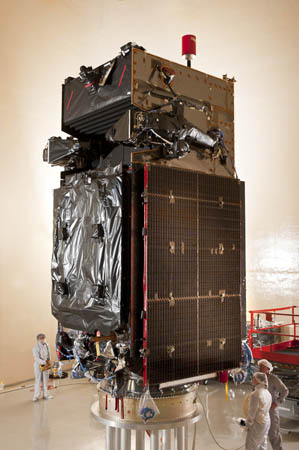 GEO-2, the second Space Based Infrared System geosynchronous satellite, successfully completed its final integrated system test and is on schedule for launch into orbit from Cape Canaveral AFS, Fla., as early as July, announced prime contractor Lockheed Martin. The FIST verified the satellite’s performance and functionality, said company officials. Lt. Col. Jonathon Whitney, the Air Force’s GEO-2 space vehicle integration and launch branch chief, said the lessons learned from GEO-1, the first SBIRS satellite, “have allowed the joint government and industry team to perform the assembly, integration, and test of GEO-2 in a more efficient manner.” He added, “We are looking forward to delivering the satellite for launch.” SBIRS satellites are designed to provide missile warning and ancillary intelligence collection. GEO-1, placed into orbit last May, already is exceeding expectations, announced Air Force Space Command officials last month. The exact launch date for GEO-2 will depend on launch range and booster availability, according to Lockheed Martin.
GEO-2, the second Space Based Infrared System geosynchronous satellite, successfully completed its final integrated system test and is on schedule for launch into orbit from Cape Canaveral AFS, Fla., as early as July, announced prime contractor Lockheed Martin. The FIST verified the satellite’s performance and functionality, said company officials. Lt. Col. Jonathon Whitney, the Air Force’s GEO-2 space vehicle integration and launch branch chief, said the lessons learned from GEO-1, the first SBIRS satellite, “have allowed the joint government and industry team to perform the assembly, integration, and test of GEO-2 in a more efficient manner.” He added, “We are looking forward to delivering the satellite for launch.” SBIRS satellites are designed to provide missile warning and ancillary intelligence collection. GEO-1, placed into orbit last May, already is exceeding expectations, announced Air Force Space Command officials last month. The exact launch date for GEO-2 will depend on launch range and booster availability, according to Lockheed Martin.
New B-52 Radar Makes First Flight
Dec. 12, 2025
The Air Force’s radar modernization effort for the B-52 Stratofortress entered flight testing recently, a “milestone” for the once over-budget system that senior leaders call the start of a new era for the Cold War bomber.

